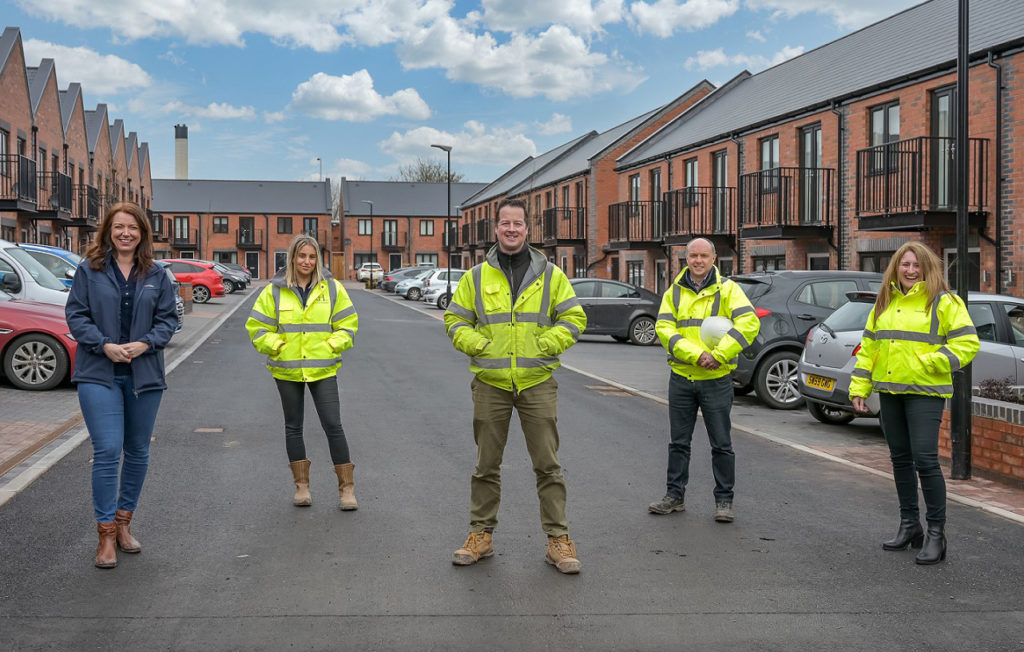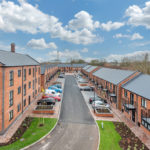Mark Gratton, Land and Partnerships Director at Wise Living, explains how the partnership between its team, Keon Homes and City of Wolverhampton Council helped regenerate a previously unviable site into a community-centered development.
Housing demand continues to outpace supply and more families in the UK are renting than ever before, creating a rental sector now worth nearly £90bn. As this market continues to grow, more developers, with the support of local authorities, are beginning to explore Build to Rent (BTR) as a solution.
Increasing the number of BTR developments is being seen as a positive thing for communities who need more valuable rental opportunities, which helps local authorities to meet local demand for market rented housing. Likewise, BTR developments are also playing a significant role in helping to transform derelict or brownfield sites. Sites that are considered ‘unviable’ will usually be seen as a risky investment for open market developers, but with the right BTR partner, developers can share the risk and open the door to new opportunities.
This was certainly the case for the site of the former Springfield Brewery in Wolverhampton, where brewing had stopped on site in the 1990s. When a fire in 2006 destroyed much of what remained of the original structure, the keysite was left untouched.
Tackling an unviable site
Taking on the transformation of the former Springfield Brewery site required a commitment to tackling contaminated ground and the site’s inner-city location, as well having the ability to work with the City of Wolverhampton Council to maintain the area’s heritage.
In order to realise the full potential of the site, it was clear that a partnership-based approach would be critical. As a result, Wise Living and Keon Homes worked closely with City of Wolverhampton Council to ensure that every element of the scheme worked for all parties.
The approach
Key to any BTR project is good design and quality construction. Wise Living worked with partners Keon Homes to ensure that the scheme would appeal to target customers in the area and over the longer term be a development that could fit in with the council’s vision for the community, including meeting sustainability targets and protecting the heritage of the location.
To achieve this criteria, the development was designed to protect and enhance the identity of the area. Compliance with the council’s ambitious ESG agenda was also taken into account, which included a ten per cent energy generation on all schemes and car charging points to each unit. This close working relationship enabled Keon Homes to deliver the ambitious scheme, led by all parties & consultants long-term planning and insight.

A case in point
The mixed-tenure scheme was completed in just 12 months and offered 64 homes in total, all of which were completely reserved off plan — emphasising the value that new-build lets, backed by the strong tenant support, add to UK housing developments.
The development — newly named as Springfield Brewery — was a unique site that could only have been successful due to the collaboration between Keon Homes and Wise Living, BM3 as design team leads, and the local planning authority. The scheme’s deliverability was aided massively by remaining housing-led, rather than being all apartments. This meant that a density level of around 50 units per acre could be achieved, while also retaining overwhelmingly positive feedback from all parties.
Alongside the focus on deliverability, the development needed to protect and reflect as much of the site’s original heritage as possible. Features such as the retaining wall surrounding the entire site and the restored grammar school gates were maintained and used as design inspiration for other areas of the site.
Creating a community
The Cambridge Street development is a prime example of how partnership working, flexibility and innovation can pay off when unlocking difficult, unused sites, realising the potential of those that are deemed too risky or too technically constrained for an open market or affordable product offering.
The house types offered on site were brand new to Wise but have not only been received incredibly well by local residents — with tenants giving it a higher-than-average recommendation score — but also help meet the council’s ESG goals with EV charging points and solar panels on the larger apartment block.
Why collaboration matters
When a partnership approach is taken, developers, BTR partners and local authorities can achieve spectacular results. To bridge the housing gap, local authorities have a key role to play in providing leadership ‘on the ground’ in terms of meeting the housing needs of their communities.
Through cooperation with the right combination of skilled experts, willing housebuilders and a suitable site, build to rent can meet the needs of local authorities as they look to deliver on their housing targets.









